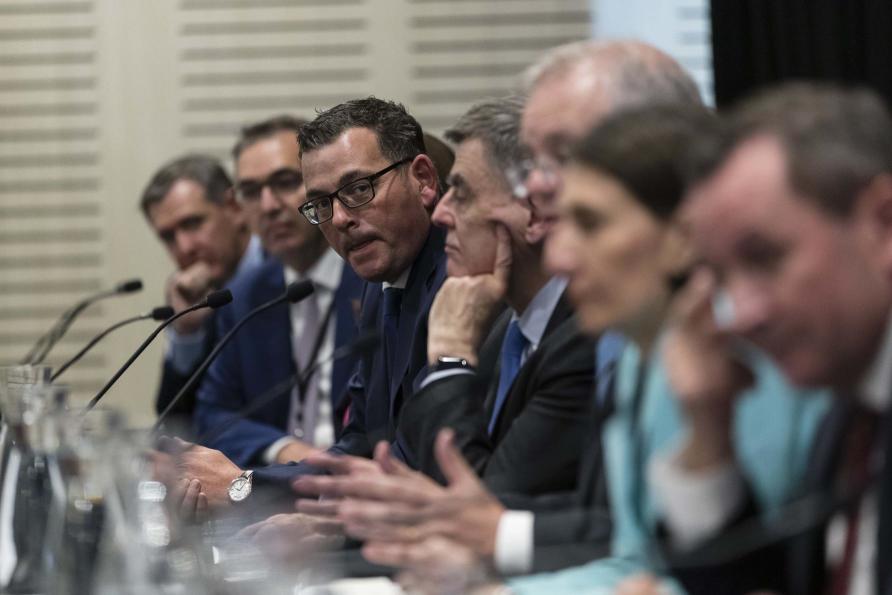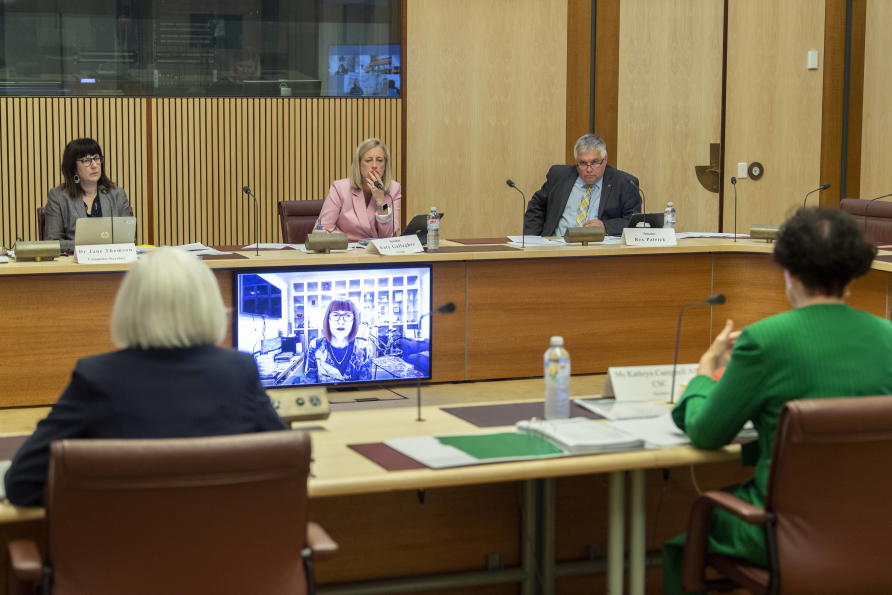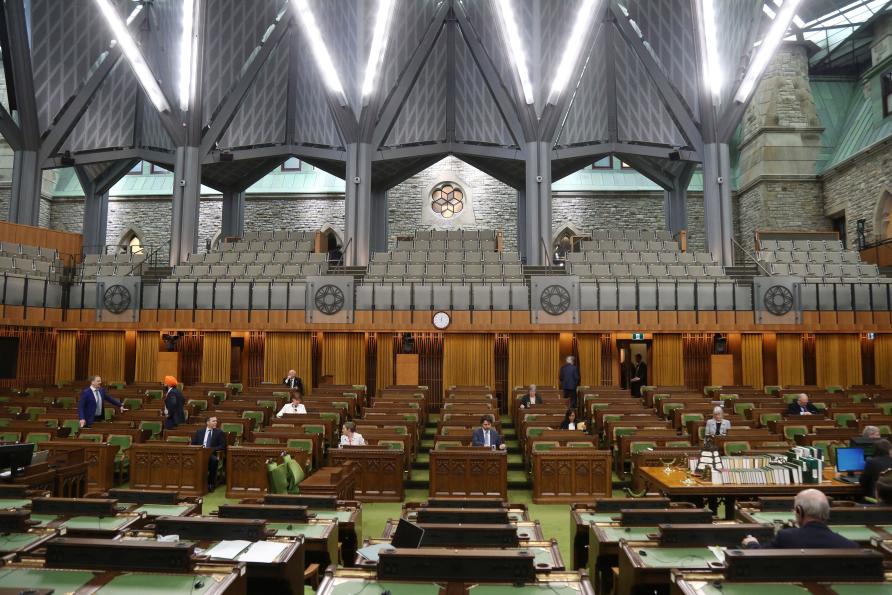Is democracy a victim of COVID-19?

Victoria continues to grapple with new COVID-19 cases, a state of disaster has been declared and Melbourne endures Stage 4 lockdown. Nationally, in just two months, Australia’s death toll has more than doubled .
In the face of a pressing crisis, the long adjournment of parliament may seem like an almost esoteric question. Certainly, the ongoing debate about the sidelining of parliaments across Australia has been a somewhat niche affair.

The National Cabinet was formed in response to an urgent public health crisis.
Since March, critics have decried the sidelining of parliament as Australia’s pandemic response has become a mainly executive-led enterprise, epitomised by the expanding apparatus of the National Cabinet.
Individual MPs have raised concerns. Prominent judges and the federal opposition pushed for a bipartisan oversight committee to provide scrutiny. The Human Rights Law Centre declared it “vital that Australia’s regular parliamentary processes continue.” Academics have expressed concern in measured tones.
Columnists have been more vociferous.
The cancellation of the federal parliament’s fortnight sitting scheduled for 4 August, and the lack of any plan for sitting by alternative means, was swiftly denounced as treating parliament as “surplus to requirements”, and as “baffling” given successful measures adopted in comparable Western states, including Canada, the UK, and across the EU.
International organisations, in a rapidly expanding glut of policy statements and reports, have also insisted that yes, parliament does matter.
Parliament, they generally agree, should only be curtailed as far as is necessary to suppress the virus. There is no justification for blanket suspension of parliament.
Occasional, partial, or post-hoc scrutiny of government measures, by parliamentary committees or otherwise, cannot fully meet the need for ongoing scrutiny of government measures in real time, especially as the pandemic continues with no clear end.

Recently, the PM has indicated that virtual participation in parliament would be limited.
Why, then, has the long adjournment of parliaments across Australia elicited little more than a shrug, if anything, from the general population?
Well, people have a lot on their plates. But would we see the same apathy if, say, Facebook was shut down for months on end?
Perhaps that is an unfair comparison.
Facebook is something 50 per cent of Australians use every day, something that touches their lives, every day. Parliament doesn’t sit every day of the year – it sits for closer to a third of the year if we combine both houses. It isn’t a visible presence in most individuals’ lives.
Yet, what does touch citizens’ lives every day is legislation and regulation. Especially at a time when laws and regulations are affecting lives with a directness and breadth far beyond ‘business as usual’.
Now seems the time when parliament should seem most important.
Some will say that waiting a little longer to fully revive parliament isn’t a big deal, if we still have committees running.
It’s true that the establishment of the Senate Select Committee on COVID-19, the use of informal pairing systems to allow short parliamentary sittings with fewer MPs, the resumption of normal sittings by some committees, and continued remote sittings for others, have provided some scrutiny.

The Senate Select Committee on COVID-19 is looking into the Australian Government’s response to the COVID-19 pandemic.
However, as widely observed, the ongoing adjournment of parliament is concerning, especially with plenty of overseas examples to draw from.
In the UK, the House of Commons was fitted with screens and on 22 April, made history when a new system mixing in-person and remote attendance was trialled for the first time.
On 12 May the Commons voted remotely for the first time, from every corner of the country.
Canada followed suit on 27 May when its hybrid House of Commons opened with the Speaker’s words: “OK, let’s make history”.
A Committee of the Whole (similar in ways to New Zealand’s Epidemic Response Committee) was also established for pre-legislation scrutiny, with the ability to convert to a House when voting is required.
Flexibility and creativity in finding solutions achieved a lot.
Potential material obstacles to fully reviving parliament have been largely addressed.
Professor of Constitutional Law, Anne Twomey suggests that the constitutional requirement that the federal parliament sit in the “seat of government” could be met by hosting remote meetings at Parliament House, with key office-holders present.

In the UK, MPs are asking questions of ministers in the House of Commons by video link.
With some committees already operating remotely, many IT and security issues have been addressed, and the federal parliament’s new six-member bipartisan working group is examining ways to meet safely, including the UK model.
The clearest sticking point indicated in July was a shared concern between the government and opposition that physical presence is central to how parliamentary business is conducted and would be degraded without it.
However, as noted by other commentators, what precisely would be missing in a move to remote sittings hasn’t been specified. We can only surmise that concerns centre on the immediacy, communal interaction, and even gravitas that only physical presence is viewed as providing.
Such concerns are possibly exacerbated by terms like ‘virtual parliament’, suggesting to some that a hybrid model would somehow not be a ‘real’ parliament.
Most recently, the PM has indicated that virtual participation would be limited and has ruled out voting remotely due to security concerns.
There is certainly a broad consensus, in Australia and worldwide, that the ideal is for parliament to meet face-to-face.
For instance, the National Assembly in France has prioritised conducting business face-face due to concerns that working remotely would diminish the “ceremonial” dimension of deliberating in person.
But most Western states have accepted that, as regards keeping parliament running, “the best is the enemy of the good”.
As observed in Canada, a hybrid parliament is “complicated, limited, and imperfect”, but it’s “the best of not-great options to keep Parliament working”. Pragmatism has won the day.

Canada’s hybrid House of Commons opened with the Speaker’s words: “OK, let’s make history”.
Perhaps most striking is the UK Parliament’s willingness to re-think how parliament works. After all, the ‘mother of parliaments’ is one where the physical setting, pomp and ceremony is so central that parliamentarians resist talk of moving it to another location even for much-needed repairs to the houses at Westminster.
It’s also vital to recognise that this is also merely a temporary fix: the UK Parliament abandoned hybrid sittings as soon as it was safer to do so in early June.
Beyond concerns about the deficiencies of parliament meeting remotely, there may also be an unexpressed view that, in a crisis, parliament is a luxury we can ill afford given that it may needlessly slow down the pandemic response.
After all, the National Cabinet has achieved a rapid and targeted response to the pandemic, with sufficient flexibility allowed for tailored measures across the states and territories.
But, Canada and New Zealand have managed to both keep parliament functioning more broadly and achieve an effective pandemic response.
So, it isn’t a binary choice. We can have our cake and eat it too. We can have decisive action and greater scrutiny.
Whatever happens, the crisis has revealed some telling truths and difficult longer-term questions about how we view parliament.
If there is a common view that the sidelining of parliament during the pandemic doesn’t really matter, what does that say about political and public perceptions of parliament as an institution? Why does parliament seem a marginal issue to most people, as disconnected from their lives?
These are the harder questions that the political system will have to grapple with as our future takes shape. Tackling them seriously and creatively can help to push a renewal of the democratic system as we walk through the crisis together and work to make a better future for all.
If you’d like to know more about Australia’s pandemic response, access the policy brief ‘Prioritising Parliament: Roadmaps to Reviving Australia’s Parliaments’, the third in a series of policy briefs in the ‘Governing During Crises’ project – launched by the School of Government at University of Melbourne. The author is Director of COVID-DEM, which curates and publishes analysis of how the pandemic is affecting democracy worldwide. This article was published by Pursuit.
Associate Professor Tom Gerald Daly is the Deputy Director of the Melbourne School of Government at the University of Melbourne. He is also the Director of Democratic Decay and Renewal (DEM-DEC).














